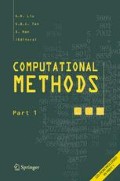Abstract
Workflow management systems (WFMSs) are used to coordinate and streamline business processes. The feedback iteration occurred frequently in very large process instances, thus bring on the high cost. In this paper, the issue that process modelling based on product lifecycle management (PLM) is studied and a parallel model – PLM-Based Parallel Workflow Model is proposed. By using the model, the complexity of process definition is reduced. In addition, the adhoc access control policies can be created within each phase of lifecycle, so the access control requirement of least privilege can be satisfied. Finally, we give two algorithms used to parse role.
Access this chapter
Tax calculation will be finalised at checkout
Purchases are for personal use only
Preview
Unable to display preview. Download preview PDF.
REFERENCES
J. Dean (1950), Pricing policies for new products. Harvard Business Review, 28, 6, pp. 45–53.
T. Levirt (1965), Exploit the product life cycle. Harvard Business Review, 43, 6. pp. 81–94.
WfMC (January 1995), TC00-1003. Workflow Management Reference Model. Workflow Management Coalition, Hampshire, UK.
J. Schöttner and Qi Guoning (2000), Produktdatermanagement in der Fertigurgsindustrie: Prinzip-Korzepte-Strategien. China Machine Industry Press.
R. Sandhu, E. Coyne, H. Feinstein et al. (1996), Role-based access control models. IEEE Computers, 29, 2, pp. 38–47.
Huang Shuang-xi and Fan Yu-shun (2004), Overview of product management. Computer Integrated Manufacturing System-CIMS, 1, 10, pp. 1–9.
M. Burkett, J. Kemmeter, K. O’Marah (2002), Product lifecycle management: what’s real now. ARM Research.
Author information
Authors and Affiliations
Editor information
Editors and Affiliations
Rights and permissions
Copyright information
© 2006 Springer
About this paper
Cite this paper
Yu, Wj., Liu, Dy., Liu, Q. (2006). A PLM-ORIENTED WORKFLOW MODEL. In: LIU, G., TAN, V., HAN, X. (eds) Computational Methods. Springer, Dordrecht. https://doi.org/10.1007/978-1-4020-3953-9_41
Download citation
DOI: https://doi.org/10.1007/978-1-4020-3953-9_41
Publisher Name: Springer, Dordrecht
Print ISBN: 978-1-4020-3952-2
Online ISBN: 978-1-4020-3953-9
eBook Packages: EngineeringEngineering (R0)

